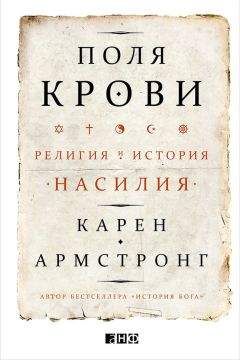198
Renou, Religions of Ancient India, pp. 220–25; R. C. Zaehner, Hinduism (London, New York and Toronto, 1962), pp. 219–25
Ригведа, 10. 90
Ibid., 10.90. [Перевод Т. Елизаренковой. Цит. по: Ригведа. Мандалы IХ – X. – М.: Наука, 1999. – Прим. пер.]
Bruce Lincoln, ‘Indo-European Religions: An Introduction’, in Death, War and Sacrifice: Studies in Ideology and Practice (Chicago and London, 1991), p. 8
Bruce Lincoln, ‘Sacrificial Ideology and Indo-European Society’, in Death, War and Sacrifice, p. 173
Thapar, Early India, p. 123
Lincoln, ‘Sacrificial Ideology’, pp. 174–75
Ibid., pp. 143–47
Reinhard Bendix, Kings or People: Power and the Mandate to Rule (Berkeley, 1977), p. 228
Max Weber, The Religion of India: The Sociology of Hinduism and Buddhism, trans. and ed. Hans H. Gerth and Don Martindale (Glencoe, Ill., 1951), p. 65
Alfred Vogts, A History of Militarism: Civilian and Military, rev. ed. (New York, 1959), p. 42
Панчавимша-брахмана (ПБ), 7.7: 9–10, см.: Heesterman, Broken World, p. 62
ШБ 6.8.14; Heesterman, ‘Ritual, Revelation and the Axial Age’, p. 402
J. C. Heesterman, The Inner Conflict of Tradition: Essays on Indian Ritual, Kingship and Society (Chicago and London, 1993) pp. 68, 84–85
Ригведа, 1.162.20–21; ср. английский перевод Гриффитса
Таиттирия-самхита (ТС), 6.4.8.1; см.: Heesterman, Inner Conflict, p. 209
Таиттирия-брахмана (ТБ), 3.7.7.14; см.: Heesterman, Broken World, p. 34
Witzel, ‘Vedas and Upanisads’, p. 82
Шатапатха Брахмана, 10.6.5.8; см.: Heesterman, Broken World, p. 57
Zaehner, Hinduism, pp. 59–60; Renou, Religions of Ancient India, p. 18; Witzel, ‘Vedas and Upanisads’, p. 81 Brian K. Smith, Reflections on Resemblance, Ritual and Religion (Oxford and New York, 1989), pp. 30–34, 72–81
Jonathan Z. Smith, ‘The Bare Facts of Ritual’, in Imagining Religion: From Babylon to Jonestown (Chicago and London, 1982), p. 63
Doniger, Hindus, pp. 137–42; Gavin Flood, An Introduction to Hinduism (Oxford, 2003), pp. 80–81
Thapar, Early India, pp. 150–52
Законы Ману, 7.16–22; см.: перевод G. Buhler (Delhi, 1962). [Перевод С. Эльмановича, проверенный и исправленный Г. Ильиным. Цит. по: Законы Ману. – М.: Наука, 1992. – Прим. пер.]
Thapar, Early India, pp. 147–49; Doniger, Hindus, pp. 165–66.
Thapar, Early India, p. 138.
Hermann Kulke, ‘The Historical Background of India’s Axial Age’, in S. N. Eisenstadt, ed., The Origins and Diversity of Axial Age Civilizations (Albany, NY, 1986), p. 385
Thapar, Early India, p. 154
Richard Gombrich, Theravada Buddhism: A Social History from Ancient Benares to Modern Colombo (London and New York, 1988), pp. 55–56
Ibid., pp. 58–59; William H. McNeill, Plagues and Peoples (Garden City, NY, 1976), p. 60; Patrick Olivelle, ed. and trans., Samnayasa Upanisads: Hindu Scriptures on Asceticism and Renunciation (New York and Oxford, 1992), p. 34; Doniger, Hindus, p. 171
Thomas J. Hopkins, The Hindu Religious Tradition (Belmont, Calif.,1971), pp. 50–51; Doniger, Hindus, p. 165
Чхандогья Упанишада, 5.10.7. Английский перевод Упанишад см.: в: Patrick Olivelle, ed., Upanisads (Oxford and New York). Ср. Брихадараньяка Упанишада, 4.4.23–35; Thapar, Early India, p. 130
Olivelle, Samnayasa Upanisads, pp. 37–38
Olivelle, Upanisads, p. xxix; Witzel, ‘Vedas and Upanisads’, pp. 85–86
Брихадараньяка Упанишада, 1.4.6. [Перевод А. Сыркина. Здесь и далее Цит. по: Брихадараньяка Упанишада. – М.: Наука, 1992. – Прим. пер.]
Брихадараньяка Упанишада, 1.4.10
Брихадараньяка Упанишада, 4.4.6
Брихадараньяка Упанишада, 4.4.23
Чхандогья Упанишада, 8:7–12
Чхандогья Упанишада, 6.12.1–3
Чхандогья Упанишада, 6.9
Чхандогья Упанишада, 6.13
Чхандогья Упанишада, 6.10
Thapar, Early India, p. 132
Flood, Introduction to Hinduism, p. 91; Patrick Olivelle, ‘The Renouncer Tradition’, in Gavin Flood, ed., The Blackwell Companion to Hinduism (Oxford, 2003) p. 271
Steven Collins, Selfless Persons: Imagery and Thought in Theravada Buddhism (Cambridge, UK, 1982), p. 64 Paul Dundas, The Jains, 2nd ed. (London and New York, 2002), p. 64
Heesterman, Broken World, pp. 164–74; Gonda, Change and Continuity, pp. 228–35; 285–94
Gonda, Change and Continuity, pp. 380–84; Patrick Olivelle, ‘The Renouncer Tradition’, pp. 281–82
Дигха-никая; см.: Olivelle, Samnyasa Upanisads, p. 43
Нарадапаравриджка Упанишада, 143; см.: Olivelle, Samnyasa Upanisads, p. 108
Ibid., p. 185
A. Ghosh, The City in Early Historical India (Simla, 1973), p. 55; Olivelle, Samnyasa Upanisads, pp. 45–46
Mircea Eliade, Yoga, Immortality and Freedom, trans. Willard Trask (London, 1958) pp. 59–62. (Элиаде М. Йога. Бессмертие и свобода. – М.: Академический проект, 2014.)
Патанджали, Йога-сутра, 2.42; см.: Eliade, Yoga, p. 52
Dundas, Jains, pp. 28–30
Ibid., pp. 106–07
Ачаранга-сутра, 1.4.1.1–2, см.: Dundas, Jains, pp. 41–42
Ачаранга-сутра, 1.2.3, ibid.
Авашьяка-сутра, 32, ibid., p. 171
Раньше западные исследователи полагали, что Будда родился около 563 г. до н. э. Однако современная наука склоняется к мысли, что он жил примерно столетием позже. см.: Heinz Berchant, ‘The Date of the Buddha Reconsidered’, Indologia Taurinensin, 10, n. d.
Маджхима-никая, 38. Дальнейшие цитаты из буддийских текстов будут даны по моим собственным переводам, если не указано обратного
Я полнее рассказала о духовном методе Будды в книге: Buddha: A Penguin Life (Армстронг К. Будда. – М.: Альпина нон-фикшн, 2008.). См. также: Richard F. Gombrich, How Buddhism Began: The Conditioned Genesis of the Early Teachings (London and Atlantic Highlands, NJ, 1966); Michael Carrithers, The Buddha (Oxford and New York, 1993); Karl Jaspers, The Great Philosophers: The Foundations, ed. Hannah Arendt, trans. Ralph Manheim (London, 1962), pp. 99–105 (Ясперс К. Великие философы. – М.: ИФРАН, 2007); Trevor Ling, The Buddha: Buddhist Civilization in India and Ceylon (London, 1973)
Edward Conze, Buddhism: Its Essence and Development (Oxford, 1951), p. 102 (Конзе Э. Буддизм: сущность и развитие. – М.: Наука, 2003.); Hermann Oldenberg, Buddha: His Life, His Doctrine, His Order, trans. William Hoeg (London, 1882), pp. 299–302 (Ольденберг Г. Будда: его жизнь, учение и община. – Издание Д. П. Ефимова, 1898.)
Сутта-Нипата, 118. [Перевод Ю. Алихановой. Цит. по: Поэзия и проза Древнего Востока. – М.: Художественная литература, 1973. В перевод внесены незначительные изменения, отражающие понимание текста К. Армстронг. – Прим. пер.]
Виная, Махавагга, 1.2; Ling, The Buddha, p. 134
Ангуттара-Никая, 1.211
Ангуттара-Никая, 1.27; Сутта-Нипата, 700; см.: Bikkhu Nanamoli, ed., The Life of the Buddha, according to the Pali Canon (Kandy, Sri Lanka, 1992), p. 134
Маджхима-никая, 89
Thapar, Early India, pp. 174–98
Patrick Olivelle, ed., Asoka, in History and Historical Memory (Delhi, 2009), p. 1
Большой наскальный эдикт, XIII. см.: английский перевод в: Romila Thapar, Asoka and the Decline of the Mauryas (Oxford, 1961), pp. 255–56
Ibid.
Olivelle, Asoka, p. 1
Колонный эдикт, VII; см.: Thapar, Asoka, p. 255
Большой наскальный эдикт, XII, ibid.
Большой наскальный эдикт, XI, ibid., p. 254
Ananda K. Coomaraswamy and Sister Nivedita, Myths of the Hindus and Buddhists (New York, 1967), p. 118 (Кумарасвами А. и Нобель М. Мифы буддизма и индуизма. – М.: Центрполиграф, 2010.
Shruti Kapila and Faisal Devji, eds., Political Thought in Action: The Bhagavad Gita and Modern India (Cambridge, 2013)
Doniger, Hindus, pp. 262–64
Thapar, Early India, p. 207
Махабхарата, 7.70.44. См. J. A. B. van Buitenen, trans. and ed., The Mahabharata: Volume 3: Book 4: The Book of Virata; Book 5: The Book of the Effort (Chicago and London, 1978).




